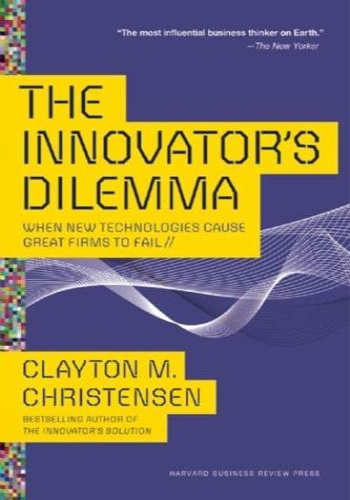Chapter 1: "Why Good Companies Fail"
This chapter delves into the concept of disruptive innovation, where new and often smaller companies enter the market with a product or service that is initially inferior to established products, but eventually improves and disrupts the market. The author uses the example of the steel industry in the early 20th century, where mini mills were seen as inferior to traditional steel mills, but eventually disrupted the market and caused the downfall of some established companies.
Real-World Example: Netflix vs. Blockbuster
In the 1990s, Blockbuster was the dominant player in the home video rental market. They had a large network of stores and a wide selection of titles, making it convenient for customers to rent movies. However, Reed Hastings, the founder of Netflix, saw an opportunity with the rise of the internet and started offering DVD rentals by mail. While this service was initially seen as inferior to the experience of going to a store, it eventually disrupted the video rental market and caused the downfall of Blockbuster. This is a classic example of disruptive innovation, where a smaller and initially inferior company eventually overtakes the established player in the market.
Chapter 2: "Disruptive Technologies"
This chapter explains the difference between sustaining and disruptive technologies. Sustaining technologies improve the performance of established products, while disruptive technologies create new and often lower-cost products that initially have lower performance but eventually surpass the established ones. The chapter uses the example of hard disk drives, where disruptive technologies such as solid-state drives eventually overtook the traditional hard disk drives in terms of performance and cost.
Real-World Example: Kodak and Digital Cameras
Kodak was a dominant player in the camera market, especially with its film-based products. However, they were slow to embrace digital cameras, which initially had lower quality but eventually improved and disrupted the market. Kodak's focus on improving film-based cameras was a sustaining technology, while digital cameras were a disruptive technology that eventually led to the downfall of Kodak's dominant position in the market.
Chapter 3: "The Theory of Disruptive Innovation"
This chapter delves deeper into the theory of disruptive innovation and outlines the three steps of disruptive growth: 1) Incumbent firms ignore the disruptive technology, believing it has no market potential. 2) As the technology improves, the new entrants gain a foothold in the market with their product. 3) The established firms are forced to adapt or are eventually overtaken by the new technology.
Real-World Example: Uber vs. Traditional Taxis
When Uber first entered the market, traditional taxi companies saw it as an inferior service and ignored its potential. However, as Uber improved its app and expanded its services, it gained a foothold in the market. Eventually, traditional taxi companies were forced to adapt and offer similar services, or risk losing a significant portion of the market. This example demonstrates the three steps of disruptive growth, with Uber initially being ignored and eventually becoming a disruptive force in the taxi industry.
Chapter 4: "The Dilemma of Disruptive Innovation"
This chapter explores the challenges that established companies face when dealing with disruptive innovation. The author argues that the strategies and management practices that work well for established companies can actually hinder their ability to adapt to disruptive technologies. Established companies have a hard time justifying investing in disruptive technologies that have initially lower performance and profitability.
Real-World Example: Nokia and the iPhone
In the early 2000s, Nokia was the world's largest mobile phone manufacturer, with a dominant market share. However, when the iPhone was introduced in 2007, Nokia's management team failed to see its potential and dismissed it as a niche product. They were focused on improving their existing products rather than investing in the disruptive technology of smartphones. As a result, Nokia eventually lost its dominant position in the market and was later acquired by Microsoft.
Chapter 5: "Give Responsibility for Disruptive Technologies to Organizations Whose Customers Need Them"
This chapter recommends that established companies create separate organizations to focus on disruptive technologies, rather than trying to integrate them into existing structures. The author argues that this allows for the development of unique capabilities and strategies geared towards the disruptive technology, rather than forcing it to fit into the traditional organizational framework.
Real-World Example: General Motors and Saturn
In the 1980s, General Motors established a separate organization called "Saturn" to focus on innovative and disruptive technologies. They were able to create a unique culture and approach to production, which allowed them to bring new products to market quickly. This strategy was successful, as Saturn surpassed other GM brands in terms of customer satisfaction and sales. However, over time, GM integrated Saturn back into their traditional structure, causing the brand to lose its focus on disruptive innovation and ultimately leading to its demise.
From these examples, it is clear that the concepts outlined in The Innovator's Dilemma are still highly relevant in modern business. Companies must be aware of emerging technologies and be able to adapt and invest in them, rather than relying solely on their established products and business models. Failure to do so can result in the downfall of even the most successful and iconic companies.






